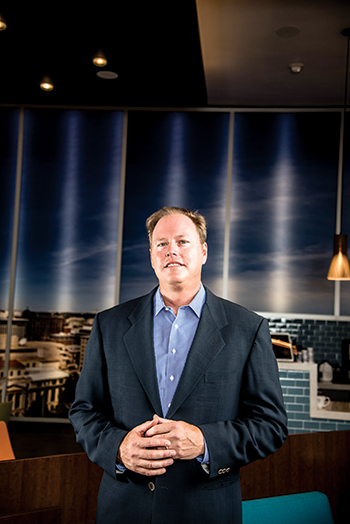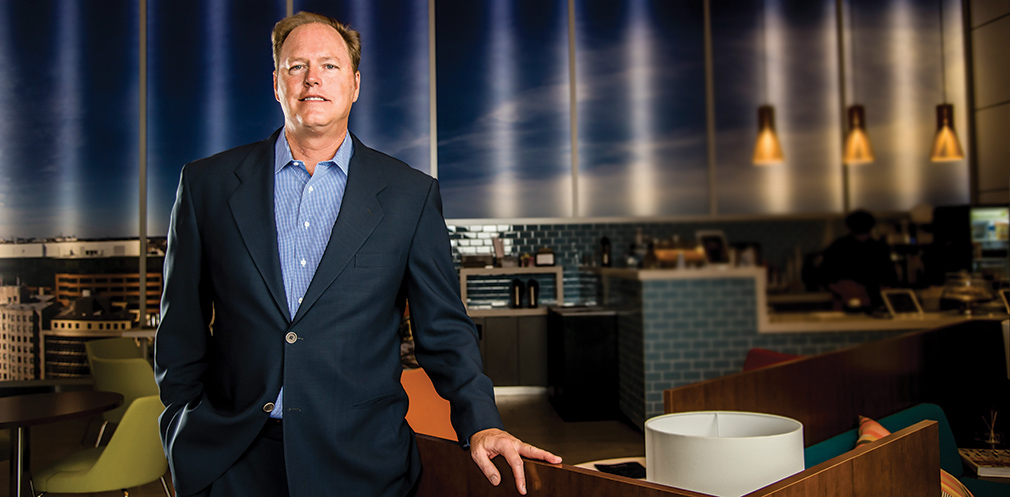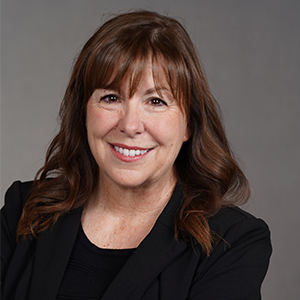#div-oas-ad-article1, #div-oas-ad-article2, #div-oas-ad-article3 {display: none;}
Washington, D.C. is a long, long way from Silicon Valley, and not just geographically. Bureaucrats are the opposite of entrepreneurs and a congressional charter makes it hard to move fast and break things. So, you’d be forgiven for thinking that a quasi-federal agency founded in the 1930s is the last place you’d describe using words like innovative or agile.
But you’d be wrong.
Defying all stereotypes, Fannie Mae’s recent actions read a lot more like a startup than a $2.8 billion company with more than 7,000 employees. In the last two years, the company has implemented a user experience strategy, adopted design thinking and accelerated time to market for an innovative array of products. And it has done all this while in conservatorship, amid a vigorous effort by former investors to see it recapitalized and released from government control.
Transforming a behemoth corporation is akin to turning the Titanic and requires a powerful executive vision and strategy. Andrew Bon Salle, executive vice president of single-family business at Fannie Mae, sat down with HousingWire to explain how the venerable institution is charting a new course.
A TEAM APPROACH
The first thing you notice about Bon Salle is his height. At 6’6”, the former American University forward walks with a certain authority, translating his experience as a team player into success as a team leader.
“I know there are a ton of clichéd sports analogies in business, but I really believe that kind of experience is transferable to the workplace,” Bon Salle said. “I learned how to be competitive, how to fail, how to get knocked down and then get back up, how to be coached, and how to fulfill my role on a team. It has benefited me in terms of my leadership style and how we at Fannie Mae lead and motivate employees.”
Bon Salle graduated from AU with a Bachelor of Science in business administration, then received his MBA in finance from the university’s Kogod College of Business Administration.
He has spent most of his career at Fannie Mae, joining the company in 1993 and serving in a number of roles within capital markets, including most recently senior vice president and head of underwriting and pricing and capital markets.

(Photography by Stephen Voss)
That kind of longevity gives him an expertise in single-family issues and the long view of Fannie Mae’s place in the market but also presents some challenges. After decades at the GSE, the pivot for Fannie Mae also meant a pivot for Bon Salle personally.
“Change is hard for anybody — including me. But when we embarked on a new strategy for the company, and specifically in [our] single family business, we started thinking about who we wanted to be as a company, and how we wanted to serve the market and fulfill our mission,” Bon Salle said.
“Right now we’re at a very interesting crossroad, with advancements in technology and a new focus in the industry on better serving the consumer. I don’t think these stars have aligned before, and it’s exciting to see how we at Fannie Mae can help the industry achieve these things.”
Bon Salle retains something else from his basketball days that helps in this effort. “I like to compete and I like to win — for us and our customers, and that’s a motivation for me, on top of all the other things we’re doing.”
DEFINING SUCCESS
Fannie Mae was established in 1938 as a federal government agency and then converted into a public-private corporation by congressional charter in 1954. In 1968, Fannie Mae became a public corporation at President Lyndon Johnson’s direction. It continued as a public company until 2008, when the Federal Housing Finance Agency famously placed it in conservatorship during the mortgage meltdown.
Although its core mission — to support homeownership by providing liquidity in the mortgage market — has never changed, with every new iteration Fannie Mae has had to redefine what success looks like. In its current state of conservatorship, with a pretty cozy corner on the loan-buying market, success could have been defined as just maintaining the status quo.
But that’s not what happened.
Instead, the company took a very Silicon Valley approach, and, in a market where it presently has very little competition, decided to up its game.
“Success for us is serving the needs of our customers. It’s serving the market by having the right products to meet the needs of the next generation of homebuyers, and doing that in a sustainable way,” Bon Salle said.
And to serve the needs of its customers, Fannie Mae had to first find out what those needs were. The company’s big breakthrough, according to Bon Salle, came in the process of listening to and learning from its customers. This was part of the company’s overall embrace of design thinking, a method of solving problems widely adopted by tech companies (see sidebar) but rarely seen inside government agencies. It required a huge adjustment in both mindset and operations.
“This is a definite strategy shift for us,” Bon Salle said. “We are now incorporating customer insights into everything we do.”
Fannie Mae hired design thinkers and trained employees in how to approach problems differently. It also hired leaders from within the mortgage industry who brought the perspective of lenders and servicers to the GSE.
“We spent time to make sure we have leaders here who are empathetic and understand our customers,” Bon Salle said. “We purposely went out and added executives from the industry to our single-family leadership team.”
The company launched a user experience initiative and began sitting with customers to watch how they worked with Fannie Mae’s technology. These UE team members asked questions about why customers used the technology the way they did and what they would change if they could. They even asked customers what five things they hated the most about the process to identify the biggest pain points.
And then Fannie Mae started designing solutions that addressed these pain points, bringing lenders into the development lifecycle and getting feedback from them during production. Fannie Mae gave employees tech tools and new authority to solve customer problems.
“Our employees get requests all of the time from customers, and we wanted to equip them to solve problems in a way that provides better service. This was a definite change in the company, and this approach requires a leader to coach those employee teams to make the right decisions,” Bon Salle said.
Clearly the approach is working, yielding programs such as Day 1 Certainty and the company’s cash-out refinance program for student loan debt.
The company has fundamentally changed the way it brings products to market in other ways too, developing software in teams that can respond quickly to needed changes.
“We went from 90 Agile teams to 145 Agile teams,” Bon Salle said. “We aren’t waiting to gold-plate our software anymore — we are focused on getting it to market so we can test and learn, and then making it better. We are on our third version of HomeReady, and we continue to improve it.”
Fannie Mae also set its own goal to reduce the time it takes for customers to close a mortgage, a process that on average takes from 50 to 70 days from application to funding with Fannie Mae. The company wants to cut that down to 10 days, and that desire became one of the driving forces behind Day 1 Certainty.
“In everything we do, we ask if it aligns with our strategy to help our customers improve how they manufacture loans. This is how we see the world — it’s our North Star,” Bon Salle said.
#div-oas-ad-article1, #div-oas-ad-article2, #div-oas-ad-article3 {display: none;}
But Fannie Mae applies that mindset to more than just lending. Earlier this year the company leveraged design thinking to update its Servicing Management Default Underwriter tool with a new user interface. It also began implementing significant investor reporting enhancements to standardize the timing, systems and processes for collecting loan-level data on mortgage-backed securities.
And Fannie Mae leveraged its innovative approach when faced with one of its most daunting tasks to date: creating a new credit market. In the past, Fannie Mae kept all the credit risk associated with loan acquisitions, but the company developed its Connecticut Avenue Securities program in 2013 and its Credit Insurance Risk Transfer program in 2014 to sell a portion of its credit risk to investors.
In this entirely new asset class, Fannie Mae acts as an intermediary between lenders and investors to set standards, provide credit risk management oversight and maintain stability.
On May 31, 2017, the company reached a milestone, completing the transfer to private investors of part of the credit risk on single-family mortgages with an unpaid principal balance of $1 trillion.
“We’ve been in capital markets since the early 1990s, but here we built a new credit market from scratch — it’s a big change for the industry and a big change for us,” Bon Salle said.
But the company’s new mindset embraces change. In May, Fannie Mae announced a proposed enhancement to its Connecticut Avenue Securities credit risk transfer program by structuring future CAS offerings as notes issued by trusts that qualify as Real Estate Mortgage Investment Conduits (REMICs). This would expand the potential investor base for these securities, attracting REITs and other investors. The company would facilitate this change by making a REMIC tax election on a majority of single-family loans that it acquires and guarantees.
“Four years ago we started developing a vehicle and a market launching Connecticut Avenue Securities. We rolled it out and got a ton of feedback from our customers, and now we are rolling out the next iteration of these securities based on that feedback,” Bon Salle said.
For Fannie Mae, success now means leading from the front, focused on continuous improvement.
“We are always asking ourselves — how do we develop new programs, deliver new technologies and how do we do that so it’s easy for our customers to use them and adopt them?
THE RIGHT PEOPLE
Every startup knows that making the right hires is key to a company’s success. But how does a company in conservatorship, with capped salaries and limited perks relative to Silicon Valley, attract the best and the brightest?
Bon Salle maintains that the company’s employees are driven, as they have always been, by Fannie Mae’s mission and its important place in enabling the American dream.
“What attracts people to Fannie Mae is what we stand for, and the impact they can have here on the whole industry,” Bon Salle said. “This is a unique company with a special purpose in the economy.”
And one area where Fannie Mae clearly excels is in its diverse workforce, with 53% identifying as minority and 47% female. But the raw numbers aren’t the point, Bon Salle maintains.
“This is who Fannie Mae is,” Bon Salle said “It didn’t happen overnight. What we do here and how we do it attracts diverse employees to the company and the fact that we’re open to and value diverse thoughts and opinions, and are inclusive — that benefits us immensely as an organization in serving markets across the country. We want our workforce to mirror the industry we serve.”
Fannie Mae, especially now, is focused on the future. But how does it accomplish that when everyone from investors to those in Congress seems intent on restructuring it?
According to Bon Salle, it all comes down to the larger mission.
“People here are focused on what we can control: building a better company, serving our customers. We are focused on bringing value to the industry. If change happens, well, we’re getting pretty good at change.”







